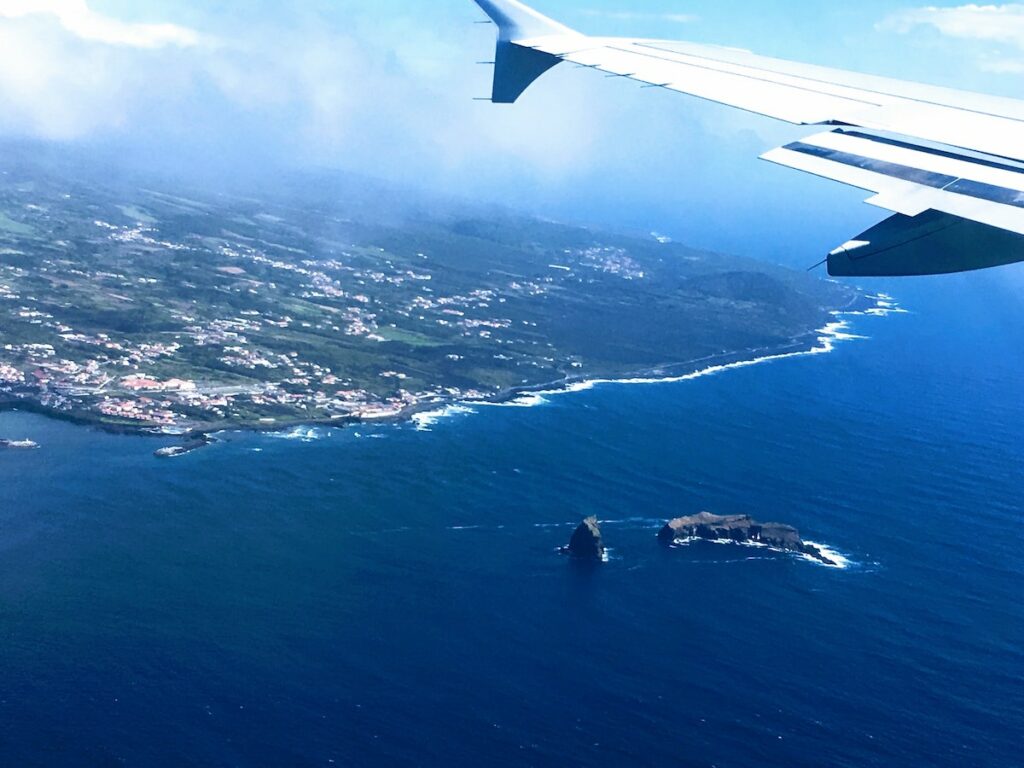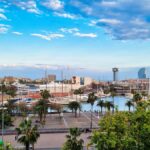If you are looking for a very special and unique vacation experience I have a destination just for you – the Azores Islands.
The Azores islands are a group of nine volcanic islands in the Atlantic Ocean, about 1,500 km (932 mi) west of continental Portugal. The archipelago is an autonomous region of Portugal and is known for its stunning natural beauty, unique culture, and friendly locals.
Here are some reasons to visit the Azores islands:
- Stunning natural landscapes: the Azores are home to a variety of natural landscapes, including volcanic craters, hot springs, and scenic beaches.
- Outdoor activities: the islands offer many outdoor activities such as hiking, whale watching, and bird watching.
- Rich culture: The Azores have a rich cultural heritage, with a unique blend of Portuguese and Azorean influences. Visitors can explore historic towns, traditional festivals, and local cuisine.
- Peaceful and quiet: this archipelago is known for its peaceful and quiet atmosphere, offering a chance to escape from the hustle and bustle of everyday life.
- Great for adventure: it is a great destination for adventure seekers, with a variety of activities such as surfing and diving.
- Rare fauna and flora: the Azores have unique fauna and flora, many of which are endemic to the islands.
- Astounding Astronomy: this is a great location for stargazing, offering clear skies and minimal light pollution.
- Whale and dolphin watching: The Azores are a popular spot for whale and dolphin watching, with several species of cetaceans that can be observed in the area.
Each island has its own charm and attractions. I would call the following 5 islands the highlight of the archipelago:
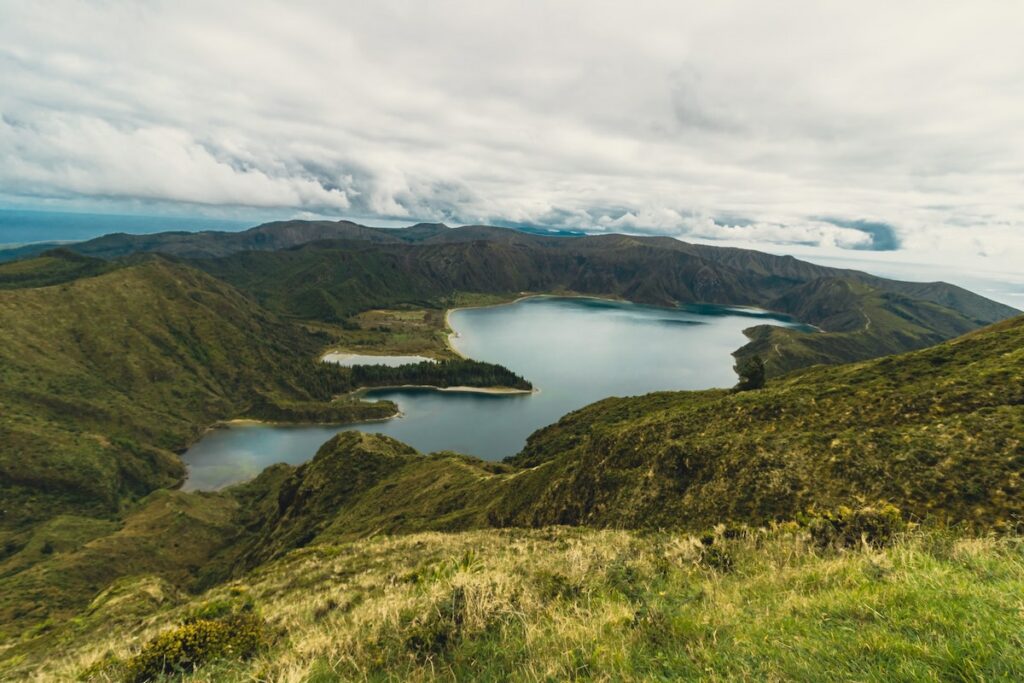
- São Miguel: the largest island in the Azores, known for its stunning lakes and volcanic landscapes, hot springs, and beautiful beaches.
- Pico Island: home to the highest mountain in Portugal, Pico Mountain, (2,351 m or 7,713 ft), which offers breathtaking views of the surrounding islands and the Atlantic Ocean. It is popular for hiking and whale watching.
- Terceira: this island offers a mix of history and nature, with the city of Angra do Heroismo being a UNESCO World Heritage Site and the Algar do Carvão – an ancient lava tube, located in the central part of the island.
- Faial: known as the “Azores Blue Island,” Faial is famous for its blue hydrangeas and its marina, which is a popular stopover for sailors.
- Flores: this island is known for its rugged landscapes and hiking trails, as well as its breathtaking beaches.
What is the best time to visit?
The Azores have a mild and subtropical climate, with mild temperatures throughout the year. The average temperature ranges from around 15°C (59°F) in the winter to around 25°C (77°F) in the summer. The islands also receive a significant amount of rainfall, with the wettest months being between October and March.
The best time to visit the Azores depends on your interests and the activities you want to do. If you’re interested in outdoor activities such as hiking and whale watching, the best time to visit is between April and October, when the weather is warmer and drier.
If you’re interested in visiting the Azores for the natural beauty, late spring and summer (May to September) is the best time to visit. The Azores are known for their green landscapes and the abundance of hydrangeas and other flowers, which are in full bloom during this time.
For birdwatching, the best time to visit is during the migration season, from late April to early June, and from mid-August to mid-September.
If you’re looking to escape the crowds, visiting the Azores during the shoulder season (March-April, and October-November) can be a great option. The weather is still mild, and the tourist season is not at its peak, which means fewer crowds and lower prices.
If you prefer a cultural experience, here are some recommendations for you:
Historic sites
- Angra do Heroismo: A UNESCO World Heritage Site located on Terceira Island, it is one of the oldest towns in the Azores and it is known for its well-preserved architecture, including the 17th-century Misericórdia Church and the 16th-century Fort of São João Baptista.
- Ponta Delgada: The largest city in the Azores, located on São Miguel Island, it is known for its historical center, which is home to several churches, including the 18th-century São Sebastião Church, and the 16th-century Fort of São Brás.
- Vila Franca do Campo: A historic town located on São Miguel Island, known for its 16th-century Fort of São Miguel.
- Horta: A town located on Faial Island, is home to several churches, such as the 16th-century Igreja de Nossa Senhora do Carmo.
- Ribeira Grande: A town located on São Miguel Island, known for its well-preserved historical center, which is home to several churches, including the 16th-century Igreja de Nossa Senhora da Conceição.
- Calheta: A town located on São Jorge Island with the 16th-century Fort of Calheta.
- Água de Pau: A village located on São Miguel Island, known for its well-preserved historical center and the 16th-century Fort of Água de Pau.
- Povoação: A town located on São Miguel Island, is home to several churches, including the 16th-century Igreja de Nossa Senhora da Paz, and a well-preserved historical centre.
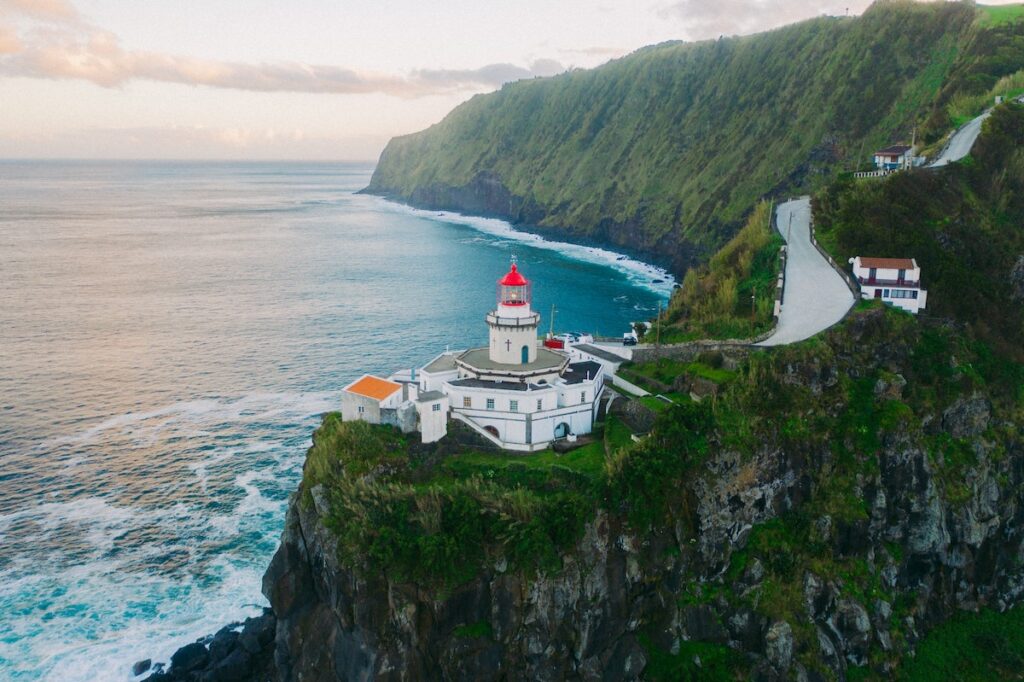
Festivals
- Festival do Mar (Festival of the Sea): A festival held annually in June in the town of Lagoa, São Miguel Island, celebrating the sea and maritime traditions with music, dancing, and traditional boats.
- Festival de Verão de Angra do Heroismo (Angra do Heroismo Summer Festival): A festival held annually in August in the city of Angra do Heroismo, Terceira Island, featuring music, dancing, and traditional food.
- Festival de Nossa Senhora dos Milagres (Festival of Our Lady of Miracles): A religious festival held annually in August in the town of Ponta Delgada, São Miguel Island, featuring processions, music, and traditional food.
- Festival da Flor (Festival of Flowers): A festival held annually in September in the town of Calheta, São Jorge Island, celebrating the beautiful hydrangeas that bloom on the island.
Museums
- Museu Carlos Machado: A museum located in Ponta Delgada, São Miguel Island, dedicated to the history and culture of the Azores, including a collection of Azorean folk art, furniture, and traditional costumes.
- Museu de Angra do Heroismo: A museum located in Angra do Heroismo, Terceira Island, dedicated to the history and culture of the Azores, including a collection of Azorean folk art, furniture, and traditional costumes.
- Museu dos Baleeiros: A museum located in Lajes do Pico, Pico Island, dedicated to the history of whaling in the Azores, including a collection of whaling equipment and artifacts.
- Museu de Arte Sacra: A museum located in Angra do Heroismo, Terceira Island, dedicated to religious art in the Azores, including a collection of religious artifacts, paintings, and sculptures.
These festivals and museums offer a glimpse into the rich culture, history, and traditions of the Azores. Visitors can discover the unique blend of Portuguese and Azorean influences throughout the islands, and learn more about the local way of life.
The Azores are known for their geothermal activity and hot springs, which are popular attractions for visitors. Here are some popular hot springs and spas in the Azores:
- Terra Nostra Garden: Located in Furnas, São Miguel, Terra Nostra Garden is a botanical garden that features several thermal pools, fed by geothermal springs. The pools are surrounded by lush vegetation and offer stunning views of the plants and trees.
- Poça da Dona Beija: Located in Furnas, São Miguel, Poça da Dona Beija is another natural hot spring. The water is rich in minerals and is said to have therapeutic properties.
- Caldeira Velha: Located in Ribeira Grande, São Miguel, Caldeira Velha is a natural hot spring that is surrounded by a dense forest. The pools are a popular spot for swimming and relaxing.
- Parque Terra Nostra: Located in Furnas, São Miguel, Parque Terra Nostra is a spa and wellness center that features geothermal pools, saunas, and steam rooms, as well as a range of spa treatments.
- Thermas dos Lordes: Located in Povoação, São Miguel, Thermas dos Lordes is a spa and wellness center that features geothermal pools, saunas, and steam rooms, as well as a range of spa treatments.
- Lagoa das Furnas: Located in Furnas, São Miguel, Lagoa das Furnas is a volcanic lake with a thermal beach, and it’s a popular spot for swimming and relaxing.
All these hot springs offer a unique experience, with different minerals and properties in their waters.
Where to stay
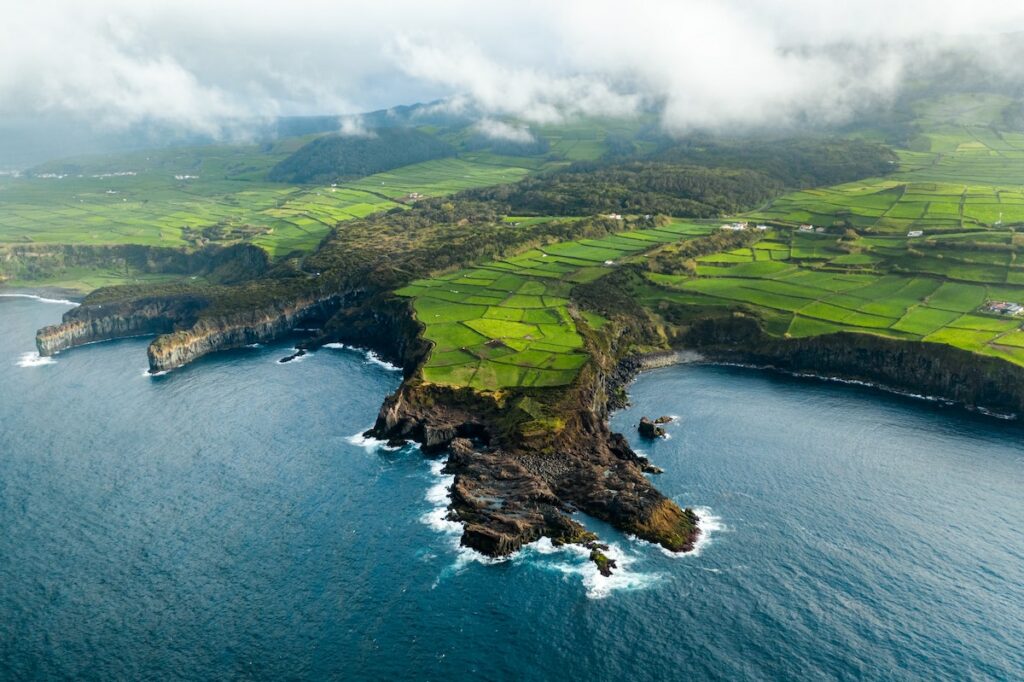
The Azores offer a variety of hotel options for travelers, including luxury resorts, charming bed and breakfasts, and budget-friendly hotels. Some popular hotel options in the Azores include:
- Hotel Terra Nostra Garden: A luxury hotel located in Furnas, São Miguel, known for its thermal pools and gardens.
- Pousada de Angra do Heroismo: A historic hotel located in the city of Angra do Heroismo, Terceira Island, which is a UNESCO World Heritage Site.
- Hotel do Canal: A charming bed and breakfast located in the town of Calheta, São Jorge Island, known for its stunning views of the Atlantic Ocean.
- Hotel Marina Atlântico: A modern hotel located in the marina of Horta, Faial Island, which is a popular stopover for sailors.
- Casa das Flores: A budget-friendly hotel located in the town of Santa Cruz da Graciosa, Graciosa Island, known for its beautiful beaches.
- Airbnb is another option on the islands with various price ranges.
I would always recommend checking the reviews and ratings, as well as the location and distance to the places you want to visit before booking.
How to get around?
There are several ways to get around the island:
- By car: Renting a car is the best option if you want to explore the islands at your own pace. There are several car rental companies on the islands. You can book a car upon arrival at the airport of Ponta Delgada (São Miguel) or online before the trip, which I would highly recommend unless you are traveling in a low season.
(NB: Most cars in The Azores are manual and there is a shortage of automatic cars, especially during a high season, it is also cheaper to rent a manual car).
Some rental companies are Sixt, Avis, Ilha Verde, Sannycars, etc.
- By bus: Bus/minibus transportation is available on all of the islands, but the smaller the island the more limited it is.
- By bike: Bicycle rentals are also available in most of the islands, it is a great way to explore the surroundings and it is more eco-friendly.
- By boat: There are several ferry services that operate between the islands, and it is also possible to take boat tours off the islands.
- By plane: Some of the islands have small airports, so it is possible to fly between them.
- Booking a tour: is another option for getting around.
It is important to keep in mind that some of the islands are more developed than others, so transportation options may vary depending on the island you are visiting.
What to eat/drink?
The Azores are known for their unique blend of Portuguese and Azorean cuisine, which features fresh seafood, local meats, and a variety of vegetables and fruits. Here are some local food and drink specialties in the Azores:
- Cozido das Furnas: A traditional stew made with meat, vegetables, and beans, cooked underground in a volcanic oven. It’s a specialty of Furnas, São Miguel Island.
- Lapas: A type of limpet, a small mollusk, that is traditionally grilled or fried and served with garlic butter. It’s a specialty of many Azorean islands, particularly Pico Island.
- Alcatra: A traditional dish made with beef or pork, marinated in wine and spices, and then cooked in a clay pot. It’s a specialty of Terceira Island.
- Queijo de Açores: A type of cheese made from raw cow’s milk, known for its strong and slightly pungent flavor. It’s a specialty of many Azorean islands.
- Bolo lêvedo: A traditional sweet bread made with yeast, flour, sugar, and eggs. It’s a specialty of Graciosa Island.
- Vinho Verde: A type of white wine made from local grape varieties, known for its refreshing acidity and lightness. It’s a specialty of Pico Island.
- Poncha: A traditional drink made with honey, lemon, and sugarcane spirit. It’s a specialty of Faial Island and it’s a popular drink in the Azores.
- Gorreana Tea: A traditional tea grown on the island of São Miguel, it’s the only tea plantation in Europe and is known for its quality and unique taste.
The Azorean cuisine is a mix of the traditional and the new, with the local products being the base of the dishes, including seafood, meat, and vegetables, and with a special touch of the unique volcanic soil and the Atlantic Ocean. Vegetarian and vegan-friendly food is also available.
Some of the best restaurants and bars in the Azores are:
- Restaurante O Pescador: Located in the town of Ribeira Grande on the island of São Miguel, this restaurant serves traditional Azorean seafood dishes.
- Restaurante A Tasca: Located in the city of Ponta Delgada on São Miguel, this restaurant serves traditional Azorean cuisine as well as international dishes.
- Cozinha da Terra: Located in the town of Furnas on São Miguel, this restaurant serves traditional Azorean dishes made with locally sourced ingredients.
- Restaurante O Furo: Located in the city of Horta on the island of Faial, this restaurant serves fresh seafood and traditional Azorean dishes.
- Adega da Ilha: Located in the city of Horta, this bar is famous for its extensive wine selection and traditional Azorean snacks.
- Zé do Telhado: Located in the city of Ponta Delgada, this bar is famous for its traditional Azorean snacks and local drinks
It is worth noting that the Azores, depending on the season, can have limited dining options and it is always recommended to check the availability of the restaurants and bars before going there.
Here are some tips to help plan your trip to the Azores:
- Decide which islands you want to visit: The Azores are an archipelago of nine islands, and each one offers unique experiences and landscapes. Decide which islands you want to visit based on your interests and the amount of time you have available.
- Plan your transportation: The Azores have several airports and ports, and inter-island transportation is mostly done by plane or ferry. Be sure to plan your transportation in advance, as flights and ferries can fill up quickly during the peak travel season.
- Research the weather: The Azores have a mild and subtropical climate, but the weather can vary depending on the island and the time of year. Research the weather in advance so you can pack appropriately.
- Book accommodations early: Popular hotels and guesthouses can fill up quickly, especially during the peak travel season. Book your accommodations as early as possible to ensure you have a place to stay.
- Rent a car: Renting a car will give you the freedom to explore the islands at your own pace, as public transportation is not very extensive in the Azores.
- Don’t miss the natural beauty: The Azores are known for their natural beauty, so make sure to include some outdoor activities in your itinerary, such as hiking, whale watching, or visiting the hot springs.
- Be open to new experiences: The Azores offer a wide range of activities, from swimming in volcanic lakes to visiting historic sites, so be open to trying new things and experiencing the unique culture of the islands.
How to get there
The Azores are located in the Atlantic Ocean, and there are a few ways to get there from the USA:
- Fly: The quickest and most convenient way to get to the Azores from the USA is by flying. You can fly to the Azores from major US cities such as Boston, New York, and Oakland, California with a connection in Lisbon, Portugal.
- Cruise: Another option is to take a cruise that stops in the Azores. This can be a great way to see multiple islands in the Azores and experience the region’s culture and history.
- Boat: It’s also possible to get to the Azores by boat from the USA, although this option is less common and takes much longer.
How long to stay in the Azores depends on your preferences and interests. If you want to explore one island in-depth, a minimum of 3-4 days is recommended. If you want to visit multiple islands, a week or longer would be ideal.
For those who want to experience the natural beauty of the Azores, I would recommend staying for at least a week. There are many outdoor activities to do such as hiking, swimming, and snorkeling. The islands offer unique volcanic landscapes, beautiful beaches, and geothermal pools.
If you’re interested in history and culture, you can stay for a shorter period. You can visit museums, churches, and traditional villages.
Ultimately, the amount of time you choose to stay in the Azores will depend on your interests and travel style.
What to pack?
- Dress in layers: The Azores can have unpredictable weather, so it’s best to dress in layers. Bring a light rain jacket or a water-resistant coat and a sweater or fleece for cooler days.
- Comfortable footwear: The Azores has many hiking trails and rugged landscapes, so bring comfortable and sturdy footwear. Hiking boots or trail shoes are recommended.
- Swimwear: There are many natural swimming holes and hot springs in the Azores, so pack a swimsuit.
- Camera: The Azores are known for their stunning landscapes and unique natural features, so don’t forget to pack a camera to capture your memories.
- Sun protection: The Azores is close to the equator, so make sure to pack sunscreen, sunglasses, and a hat to protect yourself from the sun.
- Bug spray: Depending on the time of year, mosquitoes and other bugs can be present. Bring bug spray or another insect repellent to keep them at bay.
- Power adapter: The Azores use European power outlets, so if you’re from the US, you will need to bring a power adapter.
Please note that some of the above-mentioned items might not be necessary depending on your travel plans and personal preferences.
Here is some additional travel information about the Azores:
- Currency: The official currency in the Azores is the Euro (EUR). Credit and debit cards are widely accepted, but it’s still a good idea to have some cash on hand as some places may not accept cards.
- Language: Portuguese is the official language in the Azores, but many locals speak English as well. Some older generations may not speak English, so it’s helpful to have a translation app or phrasebook handy.
- Safety: The Azores are considered a safe destination, with low crime rates. However, as with any travel, it’s always a good idea to be aware of your surroundings and keep your valuables safe.
- WiFi: WiFi is widely available in the Azores, but it may be spotty in more rural areas. Many accommodations and restaurants offer free WiFi.
- Phone service: Some of the islands have good cellular coverage, but others may have spotty reception. It is recommended to check with your service provider to see if they have roaming agreements with Portugal.
Conclusion
To sum up, the Azores is a beautiful and unique destination that offers something for everyone. From its stunning landscapes and natural features to its rich history and culture, there is plenty to explore and discover. Whether you’re a nature lover, an outdoor enthusiast, or a history buff, you’ll find something to enjoy in the Azores.
When planning your trip, it’s important to keep in mind the unpredictable weather and dress in layers. Comfortable footwear, a camera, and sun protection are also essential. Don’t forget to pack cash or a credit card, a power adapter, and a translation app or phrasebook.
The Azores has a good public transportation system and many car rental options, so it’s easy to get around and explore the islands. The food is delicious, and the locals are friendly and welcoming.
Overall, the Azores is a destination that should not be missed. The natural beauty and unique culture of the islands will leave you with memories that will last a lifetime.

